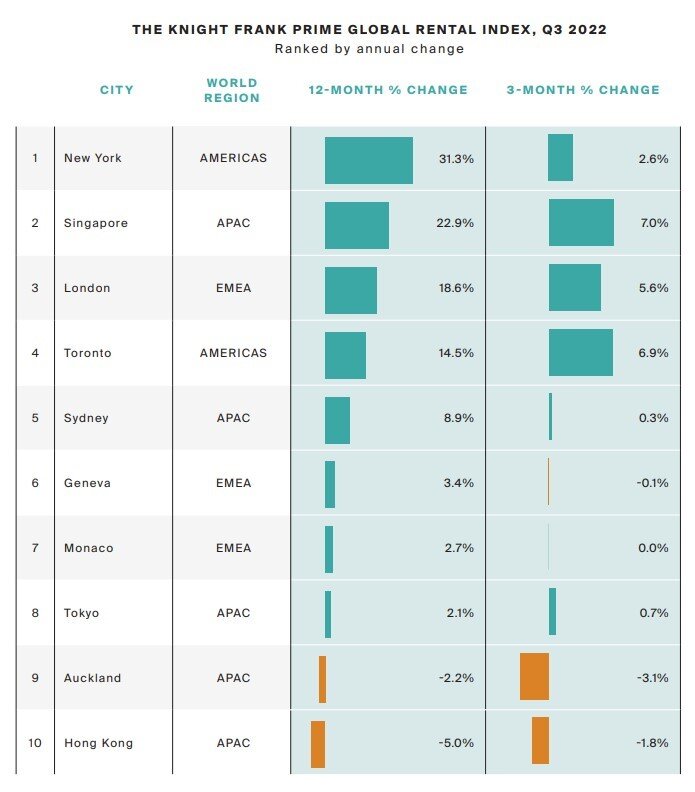New York City, Singapore and London top the list of global cities rent price growth in 2022
According to international property consultant Knight Frank, prime residential rents continue to rise but the rate of growth is slowing. Across ten global cities luxury rents increased 10.2% on average in the 12 months to Q3 2022, down from a high of 11.9% in Q1 2022.
New York led the rankings for the third consecutive quarter. Annual growth may have dipped from a high of 39% last quarter to 31%, but limited stock and continued demand is keeping rents elevated. The number of properties for rent across Manhattan is down 5% over the quarter but 65% lower compared to pandemic times in September 2020 according to StreetEasy.
Singapore sits in second place, registering a 23% rise in luxury rents over the last 12 months. The opening of borders, along with the introduction of new visas to attract top talent from around the world, has generated an uptick in demand. New rules announced in September mean those looking to sell their private home and purchase a non-subsidised Housing and Development Board (HDB) resale flat now have to wait 15 months, this policy shift is adding to rental demand as sellers opt to rent in the interim.
London completes the top three. Although the UK capital recorded a 19% rise in the year to Q3 2022, annual rental growth is down from 27% last quarter, reflecting the slowdown from the summer rental peak. But demand remains strong. Knight Frank data shows the number of new prospective tenants was 60% above the five-year average (excluding 2020) in October, while new listings were down by about a third.
Two cities saw prime rents decline year-on-year, Hong Kong (-5%) and Auckland (-2%). Demand in Hong Kong was largely locally-driven in the third quarter due to travel constraints, but with restrictions on new arrivals now lifted, demand may start to increase from expats. In Auckland, strong supply is having a softening effect on luxury rents. Following nine base rate hikes, the average mortgage rate is currently around 6% prompting some vendors to downsize temporarily and rent rather than sell their property.




